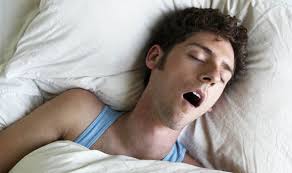Check out what the specialist says about the most common types of sleep disorders:Several factors can influence the quality of your sleep: expired mattress , inadequate pillow , unbalanced food and many others.
Types of Sleep Disorders
Insomnia
Some people who suffer from insomnia toss and turn until they fall asleep but then sleep soundly the rest of the night. Others wake up repeatedly throughout the night. Insomnia is also a common symptom of depression. In addition, people with irregular schedules often have difficulty sleeping. Paradoxically, sleeping pills can produce insomnia by disrupting the natural sequence of sleep stages. Studies of brain-wave patterns following the intake of sleeping pills show that they reduce the duration of deep (Stage 4) sleep.
Paradoxically, sleeping pills can produce insomnia by disrupting the natural sequence of sleep stages. Studies of brain wave patterns following the intake of sleeping pills show that they reduce the duration of deep (Stage 4) sleep Several non-drug methods Of combating sleeplessness have proved effective. Some involve progressive muscle relaxation, starting with the toes and moving up toward the shoulders and neck; others emphasize concentrating on pleasant mental images.
Narcolepsy
Most of us have had the embarrassing experience of falling asleep at an inappropriate moment, such as in class or at a movie with friends. Fatigue and boredom are the usual culprits. But a small number of people have a disorder called narcolepsy, which causes them to drop suddenly into a deep sleep, at any time of day, for up to 30 minutes. Such “sleep attacks” may occur at very inopportune moments, such as while driving a car. In attacks of narcolepsy, the person plunges directly into REM sleep. The precise causes of narcolepsy are unknown, but it appears to be a disorder in the brain mechanisms that control REM sleep.
Sleep Apnea
Another sleep disorder, sleep apnea, is characterized by periodic interruptions in breathing. These stoppages of airflow may last only a moment or as long as two minutes. They can occur dozens or even hundreds of times during the night.The person may periodically gasp for air, with or without waking. The disorder occurs because the throat loses its muscle tension, resulting in a blocked airway. Unsurprisingly, people with sleep apnea feel drowsy and lethargic during the day.
Sleepwalking
Sleepwalking is most common among children. Sleepwalkers are not acting out their dreams; in fact, they typically sleepwalk during Stage 4, during which there is little dreaming. Sometimes sleepwalking is accompanied by complex semi-purposeful unconscious acts, like fixing a snack. Sleepwalking usually disappears after adolescence but persists in some adults.
Night Terrors
Night Terrors arc different from nightmares, which occur during REM sleep. The person awakens in a panic from Stage 4 sleep, screaming or cowering in fear, with an elevated heart rate. Night terrors are most common in children between the ages of 3 and 5 but occasionally occur in adults.

